On March 8th, also known as Women’s Day, I was invited as a music & data intelligence expert to speak on a panel about gender and music organized by Sofar Sounds and Shesaid.so. Despite my commitment to become a role model and stand for gender equality, I had not specifically dug into women in music numbers yet and I figured that was perfect timing to finally do it.

Jump right in:
- 1/ How many women among artists?
- 2/ How many female artists make it in popular music?
- 3/ Are streaming platforms male-dominated? The French Hip Hop case
- 4/ Do men and women consume music differently?
- 5/ Are men more “passionate” about music?
- 6/ Why so few women pursuing music careers?
1/ How many women among artists?
To be able to count female singers, musicians, producers or songwriters, it is required to have gender specific data describing them. However, here’s the first roadblock — there is little public gender-differentiated metadata describing artists. Most data providers don’t have this kind of information, and the most comprehensive dataset I found so far is the Musicbrainz database.
(Update: thanks to Charmetric's Make Music Equal Initiative that's not really the case — huge props to the team for providing the industry with a reference point on artist gender distribution!)

Gender is only known for about half of individual artists of the Musicbrainz database. Among those with known gender, women represent only 11.6% of “non-group” artists (still that’s 141,318 people). Among songwriters, PRS members in the UK are 16% women, SACEM members in France are 17% women (2018 figures). The gender divide across all regions is roughly 30% female to 70% male with an optimistic outlook.
2/ How many female artists make it in popular music?
The USC Annenberg Inclusion Initiative examined the prevalence of women among the top 800 popular songs from 2012 until 2019.

Those results are consistent with other studies I could find, and with my own research from Soundcharts: female artists account for about 20% of the top charts, regardless of the platform you look at:

3/ Are streaming platforms male-dominated? The French Hip Hop case
Digger deeper for France (my beloved country) where urban music tops the charts, ratios tend to be worse. Early March this year, only 9% of the top streaming charts were female on Deezer, Spotify and Youtube. The first female I could find in the rankings was Tones & I at the 28th rank on Spotify. The week I looked was indeed a pretty bad week for female music, and hopefully it’s not necessarily the case all year round.

France Top 50 as of March 17th, 2020
In many countries, streaming top charts skew towards urban music because subscribers are typically younger and play music on repeat. French streaming charts are owned by French rappers in particular, whose audience usually skew 60-70% male. Let’s look at Ninho for instance:

Does it mean that streaming charts are male streaming charts? Why would streaming charts skew towards “gender-imbalaced” artists?
There are many possible explanations there, and the truth probably lies in a combination of the following:
- Subscribers of streaming services are more numerously male than female. Spotify has 43% female listeners for instance.
- French rappers have their music played on repeat more than any other genre.
- Streaming charts can be influenced by plays that are not properly qualified. (e.g. fake plays by bots, or social accounts connected that are male by default)
Interestingly enough, radio airplay doesn’t show as much imbalance. That same week, the Top 100 French Airplay Charts were featuring 35% female artists. In the US too, rap radio is more supportive of female rappers. Being 100% curated, traditional radio has an opportunity to be ahead of the curve and super-serve a female audience that streaming has not yet grasped.
4/ Do men and women consume music differently?
In a nutshell, yes, streaming statistics from Deezer and Spotify show that listening habits differ between males and females. More particularly, women tend to listen to more female-artists on average. On Spotify, female listeners stream 30.5% from female or mixed-gender artists, while male listeners stream 17.2% from female or mixed-gender artists.
Back to French hip hop as an example, Deezer published the gender balance for the 200 biggest hip hop artists of 2018.

The further an artist is on the right, the more the gender balance is towards female, showing how women would favor more female artists.
To illustrate the impact of gender balance, Paul Lamere from The Echo Nest/Spotify looked at gender specific top artists (2014 numbers) :
“No matter what size chart we look at – whether it is the top 40, top 200 or the top 1000 artists – about 30% of artists on a gender-specific chart don’t appear on the corresponding chart for the opposite gender.”
Paul Lamere, Music Machinery

5/ Are men more “passionate” about music?
Now let’s look at how much men and women listen to music. To avoid as much bias as possible, I first looked for Youtube numbers, since the platform has the biggest music audience in the world and allows active streams for free.

Youtube usage for music doesn’t show too much imbalance, as about 80% Youtube users, male or female, would use Youtube for music as well.
Looking at music products overall, buying patterns hardly differ from men to women, age being a lot more discriminating than gender.

Men and women seem to be equally interested in music at first, but gender imbalance still appears on music specific apps or services : most music services have audiences that skew male. Paid streaming subscribers tend to be more men, and the same trend can be observed on TikTok as well.

The Australian Music Consumer Report could explain why. Obviously, music enthusiasts are driving online music consumption on Youtube and streaming services. The report highlights that male or female millenials are equally passionate about music between 16-24. However, they usually are not accounted in streaming subscriber statistics as they remain free users or their parents pay for their online subscriptions.

Later in life, the gender gap starts to appear. From 25 years old, males would declare being more passionate than females about music. Another VEVO study about millenials shows that stereotypes die hard. Males would identify more as “Tastemakers” while females would identify more as “Front Row fans” (groupies). Sound diggers are usually pictured as masculine and that view is translating into consumer patterns.
6/ Why so few women pursuing music careers?
Stacy Smith, one of the USC Annenberg Inclusion Initiative leaders, hints at social conditioning:
“Women are shut out of two crucial creative roles in the music industry (...) What the experiences of women reveal is that the biggest barrier they face is the way the music industry thinks about women. The perception of women is highly stereotypical, sexualized, and without skill. Until those core beliefs are altered, women will continue to face a roadblock as they navigate their careers.”
Stacy Smith
During the Music & Gender panel, Claire Morel from Shesaid.so France pointed out as well how women often have to fit stereotypes: the fragile woman singer, the charismatic rock star, the inspiring muse, the woman-child, the hypersexual rapper, and so on. In the 90s, each member of the Spice Girls would illustrate one of these feminine stereotypes. There is little space for a woman who is an artist to just be an artist. Younger female artists who don’t fit these stereotypes are more likely to give up on their music career because they feel less legitimate.
“The male artist, in our image of him, does everything we are told not to do: He is violent and selfish. He neglects or betrays his friends and family. He smokes, drinks, scandalizes, indulges his lusts and in every way bites the hand that feeds him, all to be unmasked at the end as a peerless genius. Equally, he does the things we are least able or least willing to do: to work without expectation of a reward, to dispense with material comfort and to maintain an absolute indifference to what other people think of him. For he is the intimate associate of beauty and the world’s truth, dispenser of that rare substance — art — by which we are capable of feeling our lives to be elevated. Is there a female equivalent to this image?”
Rachel Cusk, Can a Woman Who Is an Artist Ever Just Be an Artist?
Artistic talent, like any other, requires nurturing. Men tend to be more favored along the way, the music business being mostly a men’s network. Females are still seen and evaluated through their gaze most of the time. Women in Music, Shesaid.so and other women initiatives aim at bridging this gap by building women networks, and by bringing these diversity issues to light.
The road ahead
Gender gaps won’t disappear anytime soon. However, I’m optimistic about a trend towards more diversity in the music industry. First, female fans or artists now have plenty of role models they can identify with. Democratization of music production and distribution enabled millions of artists to reach new audiences and the offer is no longer limited to heavily stereotyped girls or boys bands. Among the happy few in popular music, Tones and I, Billie Eilish, Adele and many more are leading as examples of women artists.
Second, the music business is transitioning towards more data-driven decision making. Talent scouting is no longer driven by gut-feeling with all biases that we know. When music professionals evaluate artists to decide whether or not they are going to sign or program them, they listen to the music, and they also now look at KPIs like fan base engagement and retention. Although not perfect, these KPIs enable comparing artists on facts rather than feelings, which will hopefully bring more diversity in the mix.
Third, data also makes the music business accountable. Reports like the one from the USC Annenberg Inclusion Initiative measures year after year how female artists evolve in the charts. The Grammys this year proved that change is here. Billie Eilish became the first woman to win the “Big Four Grammys”.















